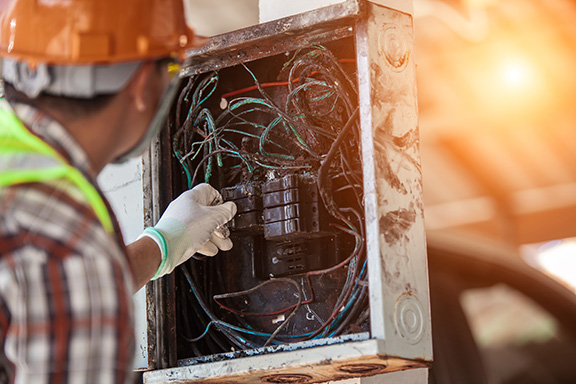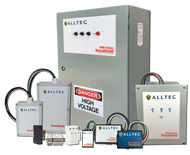Is it time to fire your Surge Protection Device? Part I
Published by Kelly Buza on Oct 24th 2023
In an era dominated by electronics, surge protection devices (SPDs) play a pivotal role in safeguarding our valuable equipment and appliances from voltage spikes. These devices serve as a critical line of defense against the destructive force of surges, which can result from lightning strikes, power grid fluctuations, or even electrical malfunctions within your building. However, it's important to understand that SPDs are not infallible; they can wear out or become ineffective over time.
The Hazards of a Failed Surge Protection Device

Without proper surge protection, electronic devices are vulnerable to the damaging effects of power surges. These surges can cause immediate failures or weaken the internal components over time, leading to premature failure.
- Data loss - Beyond physical damage, surges can corrupt data stored on computers and servers. This can be catastrophic for individuals and businesses alike, potentially resulting in irreplaceable losses.
- Fire Hazard - In extreme cases, surges can generate enough heat to cause electrical fires. This presents a significant safety risk to both property and life.
- Financial Consequences - Repairing or replacing damaged equipment can be expensive, particularly in the case of specialized electronics. Additionally, the costs associated with data recovery and potential downtime can add up quickly.
Signs of a Failing Surge Protection Device
Spotting the warning signs of a failing SPD is crucial in preventing potential damage. Here are some indicators that your surge protection may be compromised:
Age: SPDs have a finite lifespan. Depending on the quality and make, they typically last anywhere from 5 to 15 years. If your SPD is nearing or surpassing this range, it's time to consider a replacement.
Visual Damage: Examine your surge protector for any visible signs of wear, such as frayed cords, scorch marks, or melted plastic. These are clear indications that the device may have been subjected to a surge.
Inconsistent Performance: If you notice that some of your electronics are not receiving power, or if they're behaving erratically, this could be a sign that your SPD is no longer providing adequate protection.
Indicator Lights: Many surge devices have indicator lights that signal if the device is functioning correctly. If these lights are not illuminated, it may indicate a problem.
When to Replace Your Surge Protection Device
1. After a Significant Surge Event: If your area experiences a severe electrical storm or any event that results in a noticeable power surge, it's advisable to replace your surge protector. Even if it appears undamaged, it may have absorbed a significant amount of energy and be less effective in future surges.
2. When Moving or Renovating: Any significant changes to your electrical setup, such as moving to a new location or undertaking renovations, should prompt a reevaluation of your surge protection. New wiring or altered circuits may require an upgrade to your surge protection system.
3. During Routine Maintenance: As part of regular facility maintenance, include a check of your surge protection devices. If they're approaching the end of their expected lifespan, it's best to replace them preventatively.
Surge protection devices are indispensable guardians of our electronic equipment. Recognizing the dangers associated with non-functional SPDs and knowing when to replace them can save you from costly damage, potential data loss, and even safeguard lives and property. Regular inspections, especially after significant electrical events, are essential in ensuring that your surge protection devices are up to the task of defending your valuable electronics. Don't wait for disaster to strike; invest in the safety of your devices today.
Part II will cover the important differences between UL 1449 2nd, 3rd, and 4th edition surge devices.

